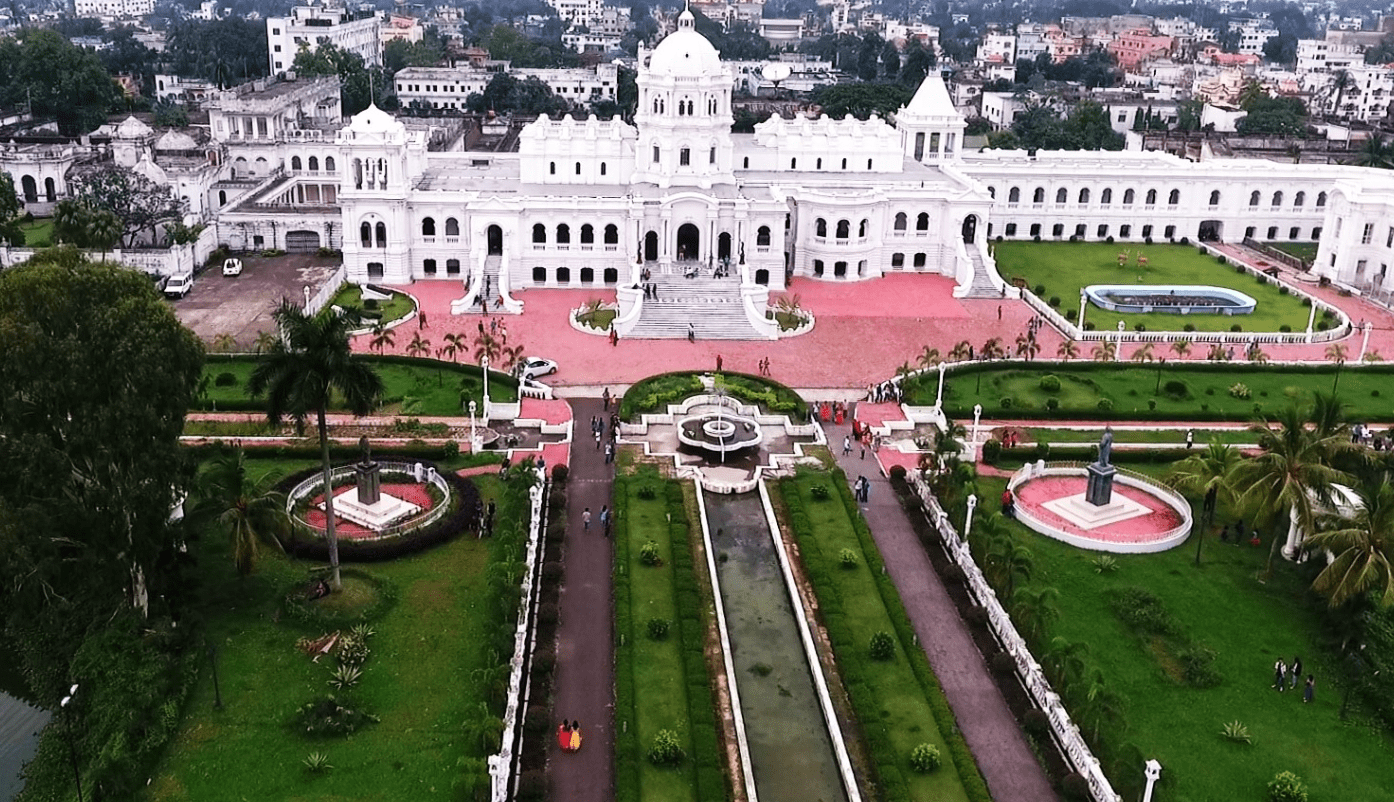Indian cuisine is as diverse as the country itself, with each region offering its own unique flavors, ingredients, and cooking techniques. The cuisine is known for its bold and aromatic spices, vibrant colors, and rich, complex flavors. Indian food is a celebration of the country’s cultural and culinary heritage, with a history that dates back thousands of years. The use of spices such as cumin, coriander, turmeric, and cardamom is a defining characteristic of Indian cuisine, as is the use of fresh herbs, such as cilantro and mint. The cuisine also features a wide variety of vegetarian and non-vegetarian dishes, making it a paradise for food lovers of all dietary preferences.
The traditional Indian meal typically consists of a variety of dishes, including rice or bread, lentils or legumes, vegetables, and meats or fish. Each dish is carefully spiced and prepared to create a harmonious balance of flavors. Indian cuisine also includes a wide range of sweets and desserts, often made with ingredients such as milk, ghee, sugar, and nuts. Whether you’re a fan of spicy curries, flavorful biryanis, or indulgent sweets, Indian cuisine has something to offer for every palate. With its rich history and diverse regional influences, Indian cuisine is a culinary journey that promises to delight and inspire food enthusiasts around the world.
Key Takeaways
- Indian cuisine is known for its diverse flavors, spices, and cooking techniques, influenced by various regions and cultures.
- Must-try Indian dishes include biryani, butter chicken, dosa, samosa, and chaat, each offering a unique taste and experience.
- Regional varieties of Indian food showcase the rich culinary traditions of different states, such as the spicy curries of South India and the hearty breads of North India.
- Street food and local markets offer a vibrant and authentic way to experience Indian cuisine, with popular snacks like vada pav, pav bhaji, and golgappa.
- Cooking classes and food tours provide an immersive opportunity to learn about Indian ingredients, cooking methods, and cultural significance of various dishes.
Must-Try Indian Dishes
When it comes to must-try Indian dishes, the options are endless. From the iconic butter chicken and flavorful biryani to the savory samosas and crispy dosas, Indian cuisine offers a wide array of dishes that are sure to tantalize your taste buds. One of the most popular dishes is butter chicken, a creamy and indulgent curry made with tender pieces of chicken cooked in a rich tomato-based sauce. Another must-try dish is biryani, a fragrant rice dish cooked with aromatic spices and either meat or vegetables. The layers of flavors in biryani make it a true culinary delight.
For those looking for a vegetarian option, samosas are a must-try. These crispy pastries are filled with spiced potatoes, peas, and sometimes meat, then deep-fried to perfection. Another vegetarian favorite is dosa, a thin and crispy pancake made from fermented rice and lentil batter, typically served with a variety of chutneys and sambar. And let’s not forget about the indulgent sweets such as gulab jamun, a popular dessert made from deep-fried milk solids soaked in sugar syrup, or the creamy rice pudding known as kheer. These are just a few examples of the many delicious dishes that make Indian cuisine so beloved around the world.
Regional Varieties of Indian Food
India’s vast and diverse landscape has given rise to a wide range of regional cuisines, each with its own distinct flavors and cooking styles. In the north, you’ll find rich and hearty dishes such as butter chicken, kebabs, and tandoori meats, often accompanied by fluffy naan bread or fragrant basmati rice. The cuisine in the south is known for its use of coconut, curry leaves, and tamarind, resulting in dishes like dosas, idlis, and spicy fish curries. In the west, the cuisine is influenced by the flavors of Gujarat and Rajasthan, featuring dishes such as dhokla, thepla, and flavorful vegetarian curries.
The eastern region of India is known for its love of fish and seafood, with dishes like macher jhol (fish curry) and chingri malai curry (prawns in coconut milk) being popular choices. The northeastern states offer a unique blend of flavors from tribal communities and neighboring countries like Nepal and Bhutan, resulting in dishes such as momos (dumplings), thukpa (noodle soup), and smoked meats. Each region of India has its own culinary traditions and specialties, making it a paradise for food enthusiasts looking to explore the country’s diverse flavors.
Street Food and Local Markets
| City | Number of Street Food Vendors | Popular Local Markets |
|---|---|---|
| New York | 5000 | Union Square Greenmarket, Smorgasburg |
| Bangkok | 15000 | Chatuchak Weekend Market, Or Tor Kor Market |
| Mexico City | 10000 | Mercado de la Merced, Mercado Roma |
One of the best ways to experience the vibrant flavors of Indian cuisine is by exploring the local street food scene and bustling markets. Street food vendors can be found on almost every corner, offering an array of savory snacks and sweet treats that are both delicious and affordable. Whether it’s crispy pakoras, spicy chaat, or sweet jalebis, there’s something for everyone to enjoy. In addition to street food, local markets are a treasure trove of fresh produce, spices, and regional specialties. From bustling bazaars to colorful fruit and vegetable markets, these vibrant spaces offer a glimpse into the heart of Indian culinary culture.
Visiting local markets also provides an opportunity to interact with vendors and learn about the ingredients used in Indian cooking. You can sample exotic fruits, aromatic spices, and freshly baked bread while immersing yourself in the sights, sounds, and aromas of the market. Whether you’re exploring the bustling streets of Delhi or the vibrant markets of Mumbai, the street food and local markets in India are an essential part of the culinary experience.
Cooking Classes and Food Tours
For those looking to take their love of Indian cuisine to the next level, participating in cooking classes or food tours can provide an immersive and educational experience. Many cities in India offer cooking classes where visitors can learn how to prepare traditional dishes from expert chefs. These classes often include a visit to the local market to select fresh ingredients before heading to the kitchen to learn about the art of Indian cooking. Participants can expect to learn about the use of spices, cooking techniques, and the cultural significance of various dishes.
Food tours are another popular option for exploring India’s culinary scene. These guided tours take participants on a journey through local eateries, street food stalls, and hidden gems known only to locals. Whether it’s a walking tour through the narrow lanes of Old Delhi or a culinary adventure through the coastal city of Kochi, food tours offer a unique opportunity to sample a wide variety of dishes while learning about the history and culture behind each bite.
Dining Etiquette and Cultural Traditions

In India, dining is not just about eating; it’s a social and cultural experience that is steeped in tradition and etiquette. When dining in India, it’s important to remember that many people eat with their hands, especially when enjoying dishes like biryani or roti. It’s customary to use only your right hand for eating as the left hand is considered unclean in Indian culture. Additionally, it’s polite to wait for the host or eldest person at the table to start eating before you begin your meal.
Another important aspect of dining etiquette in India is respecting dietary restrictions. Many Indians follow religious or cultural dietary guidelines that may prohibit certain foods such as beef or pork. It’s important to be mindful of these restrictions when dining with locals or attending social gatherings. Lastly, it’s customary to express gratitude for a meal by complimenting the host on the food and showing appreciation for their hospitality.
Tips for Exploring India’s Culinary Scene
When exploring India’s culinary scene, there are a few tips to keep in mind to make the most of your experience. Firstly, be open-minded and willing to try new flavors and ingredients. Indian cuisine offers a wide range of dishes that may be unfamiliar to some visitors, so embracing new tastes is key to fully appreciating the diversity of Indian food.
Secondly, be mindful of hygiene when sampling street food. Look for vendors who maintain clean cooking practices and use fresh ingredients to ensure a safe dining experience. It’s also advisable to carry hand sanitizer or wet wipes for added hygiene while exploring street food stalls.
Lastly, take advantage of local recommendations from residents or hotel staff when seeking out authentic dining experiences. Locals often know the best places to eat traditional dishes or hidden gems that may not be listed in guidebooks. By seeking out these insider tips, you can discover some of the most delicious and authentic flavors that India has to offer.
In conclusion, Indian cuisine is a vibrant tapestry of flavors, colors, and aromas that reflects the country’s rich cultural heritage and diverse regional influences. From must-try dishes like butter chicken and biryani to the bustling street food scene and local markets, exploring India’s culinary landscape is an adventure for all the senses. By participating in cooking classes or food tours and embracing dining etiquette and cultural traditions, visitors can gain a deeper appreciation for the artistry and significance of Indian cuisine. With an open mind and a willingness to explore new flavors, India’s culinary scene promises an unforgettable journey for food enthusiasts around the world.
FAQs
What is Indian food?
Indian food encompasses a wide variety of regional and traditional cuisines native to India. It is known for its diverse flavors, spices, and cooking techniques.
What are some popular Indian dishes?
Some popular Indian dishes include biryani, butter chicken, tikka masala, dosa, samosa, tandoori chicken, and various types of curry such as chicken curry, paneer curry, and dal curry.
What are the key ingredients in Indian cuisine?
Key ingredients in Indian cuisine include spices such as cumin, coriander, turmeric, cardamom, and garam masala, as well as lentils, rice, wheat, and a variety of vegetables and meats.
What are the main regional cuisines in India?
India has several distinct regional cuisines, including North Indian, South Indian, East Indian, West Indian, and Northeastern Indian cuisines. Each region has its own unique flavors and cooking styles.
What are some popular street foods in India?
Popular street foods in India include chaat (a savory snack), vada pav (potato fritter in a bun), pav bhaji (vegetable curry with bread), samosa (fried pastry with savory filling), and various types of kebabs and grilled meats.
What are some etiquette tips for dining in India?
When dining in India, it is customary to eat with your right hand, as the left hand is considered unclean. It is also polite to wait for the host or elder to start eating before you begin, and to finish everything on your plate as a sign of appreciation.
What are some popular Indian desserts?
Popular Indian desserts include gulab jamun (deep-fried milk balls in syrup), jalebi (deep-fried sweet pretzel), rasgulla (cheese dumplings in sugar syrup), kheer (rice pudding), and barfi (sweet confection made from condensed milk and sugar).

